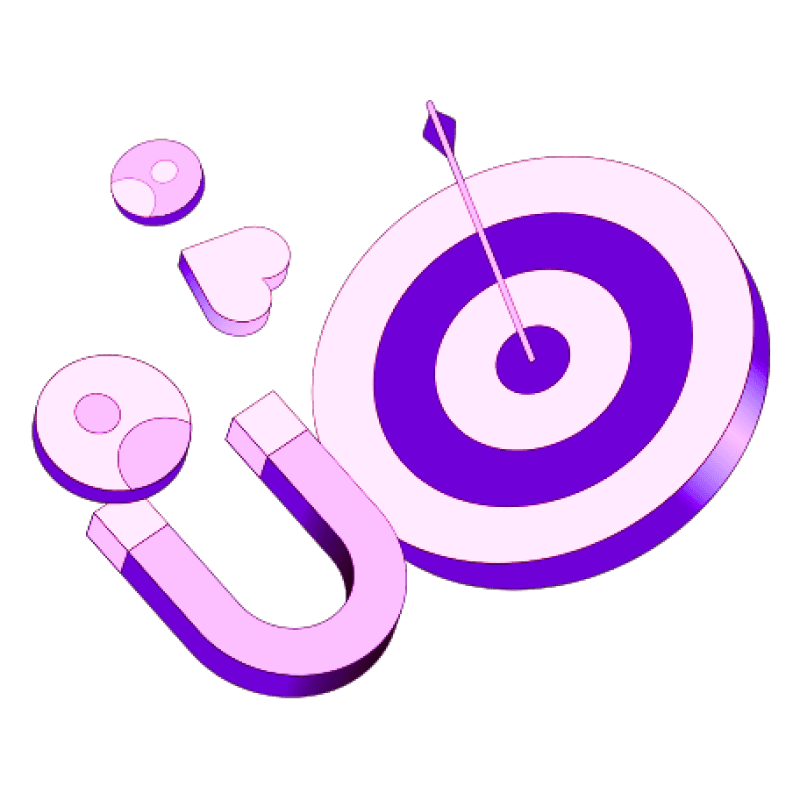Blogs
Articles

6 Inside Sales Metrics Worth Tracking in 2025
A striking statistic shows that 80% of Americans don't answer calls from unknown numbers. Inside sales metrics tracking has become crucial in today's challenging sales environment.
Sales leaders often push metrics tracking to the side while they focus on execution. But tracking the right sales team metrics goes beyond measuring performance—it's about staying alive. Your team can spot potential issues early and take action when you make use of information about your business.
Sales revenue remains the ultimate success indicator for any sales team. The challenge lies in choosing the right KPI metrics. Teams often struggle to identify which metrics matter most for their specific roles.
This piece will explore six crucial inside sales metrics you should track in 2025. We'll help you understand the metrics that drive real results, from sales cycle length to customer acquisition cost. Let's tuck into these key sales KPIs that will reshape the scene of your inside sales success.
What are the key inside sales metrics?
Key performance indicators (KPIs) work as a compass that guides your inside sales team to success. These aren't just regular measurements - inside sales metrics link directly to your business goals and give you analytical insights to make strategic decisions.
The difference between metrics and KPIs might seem small but it matters. Sales metrics measure any countable aspect of sales performance, while KPIs track progress toward specific goals. To name just one example, if your business wants to reach 1,200 sales per year, you might set a KPI of 100 sales each month.
Sales teams used to focus on simple metrics like new leads and closed deals. In spite of that, today's evolving sales environment demands tracking both foundational metrics and customer relationship measures. This approach helps create predictable revenue and maximize investment returns.
Inside sales metrics split into these important categories:
Revenue and Value Metrics
Pipeline and Conversion Metrics
Sales Cycle Metrics
Customer-Focused Metrics
Rep Performance Metrics
Activity Metrics
Pipeline Management Metrics
Quota attainment remains one of the clearest inside sales metrics - it simply measures whether reps hit their targets in a given period. This basic metric shows individual strengths, weaknesses, motivation, and job fit.
1. Sales cycle length
Sales cycle length is a vital inside sales metric that shapes your revenue forecasting and resource allocation. This metric shows how long it takes a potential customer to complete your sales process, from your first contact until they make their final purchase decision. Learning about this timeframe helps you predict cash flow, use resources wisely, and find ways to make your sales process better.
CSO Insights data shows that most B2B deals (74.6%) close within 4 months. This time varies by a lot across industries based on several factors. Looking at your own sales cycle length gives great insights about your business.
Here's the quickest way to figure out your sales cycle length:
Add up the total number of days it took to close every sale
Divide that sum by the total number of deals
Let's look at an example. You closed 4 deals that took 40, 30, 60, and 70 days. Your calculation would be (40+30+60+70) = 200 days total divided by 4 deals = 50 days average sales cycle length. This tells you that similar deals might take about 50 days to close, which helps predict when you'll see revenue from pending sales.
B2B and B2C sales cycles are quite different. B2B cycles take longer because they involve multiple decision-makers, complex evaluations, and higher purchase values. These deals move through several stages: lead generation, prospecting, needs analysis, proposal, negotiation, and closing. Each stage needs time to build relationships, solve problems, and direct organizational processes.
B2C sales cycles are shorter and more straightforward. Consumers often buy based on immediate needs or wants, with a simpler decision-making process. These differences help set realistic goals for your inside sales team.
Managing your sales cycle length needs constant attention and smart adjustments. By watching this key metric, your team can spot problems, improve processes, and drive more revenue growth efficiently.
2. Conversion rate
Conversion rate is the life-blood metric of any successful inside sales operation. This KPI shows the percentage of leads that become customers through your sales process. Unlike other sales metrics that just track activities, conversion rates show how well your team moves prospects through each stage of your sales funnel.
The math is simple - divide the number of conversions by total leads and multiply by 100. To name just one example, if your inside sales team generated 500 leads in a month and closed 50 deals, you'd have a 10% conversion rate. This calculation works for both your overall pipeline and individual sales stages.
B2B companies typically see a lead-to-opportunity conversion rate between 10-15%, while opportunity-to-deal rates range from 20-30%. These numbers change based on industries and sales models. SaaS companies usually achieve 7% lead-to-customer conversion rates, while retail businesses hover around 3%.
Tracking conversion rates helps you pinpoint exactly where prospects drop off in your sales process. Your data might show that 40% of leads book initial appointments, but only 15% of those appointments turn into product demonstrations. This clearly shows where your team needs to focus.
Your inside sales conversion rates depend on several factors:
Lead quality - Prospects who match your ideal customer profile convert better
Sales rep skills - Individual performance creates big differences in conversion numbers
Value proposition clarity - Clear communication of your unique selling points drives better results
Follow-up speed and persistence - Reaching leads within five minutes makes them 100 times more likely to convert than waiting 30 minutes
Sales process optimization - A smooth process with fewer obstacles makes conversion easier
As we approach 2025, inside sales teams see conversion rate optimization as more than just a metric - it's a complete framework to keep improving sales. By analyzing this fundamental inside sales metric piece by piece, your team can improve each stage of your sales process.
3. Churn rate
Churn rate works as a warning system for inside sales teams and signals problems in customer relationships. This key metric shows the percentage of customers who quit using your product or service in a specific time period. Your inside sales team should pay close attention to churn because getting new customers costs five to twenty-five times more than keeping current ones.
Here's a simple formula to calculate churn rate:
Churn Rate = (Customers Lost During Period ÷ Total Customers at Start of Period) × 100
Let's look at an example. If you start a quarter with 500 customers and lose 25 by the end, your quarterly churn rate would be 5%. The math looks simple, but you need careful analysis to understand what these numbers mean.
Your sales team should keep track of both voluntary and involuntary churn. Customers who choose to leave create voluntary churn, while issues like failed payments or business closures cause involuntary churn. Each situation needs its own fix.
Customer departure timing tells its own story. Early churn in the first month points to onboarding issues or sales promises that didn't match reality. Customers leaving after several years might mean your product hasn't kept up with their growing needs.
Raw percentages don't tell the whole story - you need to watch how churn hits your revenue. A 5% customer churn rate could mean bigger revenue losses if your top-paying customers leave. That's why you should track both customer and revenue churn to get the full picture of your retention health.
These key factors shape churn rates:
Product-market fit - Your solution must match what customers need, or they'll leave
Customer success practices - Poor onboarding and support drive customers away
Competitive landscape - Better alternatives in your market can push customers to switch
Contract terms - Shorter contracts often mean higher churn
Sales practices - Overselling or making promises you can't keep leads to quick customer exits
4. Customer acquisition cost
Customer acquisition cost calculations show how well your inside sales operation performs financially. Your sales dashboard needs CAC as a key metric to track the money spent on winning new customers. The digital world gets more competitive each day, and businesses must track and improve this number to grow sustainably.
You can easily calculate customer acquisition cost. Just divide your total sales and marketing expenses by the number of new customers you got in that time period. To name just one example, if your inside sales team uses $50,000 on salaries, tools, and campaigns in a month and gets 100 new customers, your CAC would be $500 per customer.
This simple math hides a lot of moving parts. A detailed CAC analysis has:
Sales team salaries and commissions
Marketing campaign expenses
Software and technology costs
Overhead allocation
Training and development investments
CAC becomes really powerful when you pair it with other metrics we talked about. By itself, CAC tells you little, but when you connect it with customer lifetime value (CLV), you get a telling ratio. Your CLV:CAC ratio should be above 3:1, which suggests customers bring in three times more value than what you spent to get them. When ratios fall below this mark, your business model might not last.
Looking at CAC next to sales cycle length reveals important patterns in efficiency. Longer sales cycles often relate to higher acquisition costs because you need more touchpoints and resources to close deals. When both these numbers suddenly go up, you might have basic problems with your sales process or product-market fit.
Different industries and business models see different CAC numbers. SaaS companies usually want to recover their CAC within 12 months of getting a customer. In stark comparison to this, companies with better retention rates might be fine with longer CAC payback periods because their customers stay longer.
The best inside sales teams in 2024 break down their CAC by:
Lead source – Which channels bring in customers at the best cost
Product line – Which products need more resources to sell
Customer segment – How efficiently you acquire different types of buyers
Sales representative – Which team members close deals most cost-effectively
5. Customer retention rate
Customer relationships form the bedrock of steady revenue growth for inside sales teams. Customer retention rate shows what percentage of customers stick with your company during a specific timeframe. This metric complements churn rate but focuses on customers who stay rather than those who leave.
The retention rate calculation uses a simple formula:
Customer Retention Rate = ((Customers at End of Period - New Customers Acquired During Period) ÷ Customers at Start of Period) × 100
Let's look at an example: You start a quarter with 200 customers, gain 50 new ones, and end with 230 customers - your retention rate would be 90%. This number shows how well your inside sales team builds lasting relationships beyond the first purchase.
Your organization's bottom line depends heavily on retention rates. Studies show that a 5% increase in customer retention can boost profits by 25% to 95%. The numbers make this clear - you have a 60-70% chance of selling to existing customers, but only 5-20% to new prospects.
Key elements shape your retention metrics:
Onboarding experience - The first 90 days shape customer satisfaction
Account management quality - Active relationship management drives renewals
Product adoption levels - More feature usage means longer customer life
Communication frequency - Meaningful regular contact strengthens relationships
Problem resolution speed - Quick issue resolution builds loyalty
Leading inside sales teams run structured retention programs. They schedule regular check-ins at key points, offer custom training based on usage, and employ renewal specialists who reach out to customers before contracts expire.
Your industry determines what makes good retention benchmarks. Enterprise SaaS companies aim for 90%+ retention, while SMB segments target 75-85%. Retail businesses see 30% monthly retention as normal due to their buying patterns.
6 inside sales metrics
Successful inside sales teams rely on multiple metrics rather than individual indicators. The six inside sales metrics we've explored are the foundations of strategic decision-making and performance improvement in 2025.
These metrics create a complete dashboard that reveals your sales organization's health and effectiveness. Sales cycle length gives timing insights and helps forecast revenue and resource needs. Conversion rate shows your team's effectiveness at each pipeline stage. Churn rate acts as an early warning system and highlights relationship problems before they grow.
Customer acquisition cost shows how efficiently you grow. Customer retention rate proves how well you maintain profitable relationships over time. These metrics create an interconnected system where improvements in one area positively affect others.
The best way forward is to track these metrics together, not separately. To cite an instance, reduced sales cycles with better conversion rates show real process improvements. However, faster cycles with lower conversion might point to harmful shortcuts.
These six metrics enable evidence-based decisions across multiple areas:
Strategic planning – Finding green growth opportunities
Resource allocation – Placing team members where they create the most value
Process optimization – Simplified processes to optimize efficiency
Performance management – Providing objective measures for evaluation
Weekly metric reviews should focus on trends more than individual data points. This prevents knee-jerk reactions to short-term changes while staying responsive to emerging patterns.
The most successful inside sales organizations will track these metrics carefully and promote a culture where team members know how their daily work affects these key performance indicators.
Conclusion
High-performing teams stand apart from others in 2025 by tracking the right inside sales metrics. Sales cycle length, conversion rate, churn rate, customer acquisition cost, and retention rate create your dashboard that drives strategic decisions and growth. These metrics work together to give you a detailed view of your sales operations instead of disconnected performance snapshots.
Evidence-based teams make smarter decisions about resources, process optimization, and performance management. The team should review weekly trends rather than individual data points to avoid overreactions and spot emerging patterns early. Better performance in one metric area creates positive effects across your sales ecosystem.
Your success depends on consistent tracking and team education. Sales representatives need to see how their daily work affects these critical performance indicators. Teams can find valuable resources at Persana.ai to support their inside sales transformation when they need guidance on implementing these metrics.

Create Your Free Persana Account Today
Join 5000+ GTM leaders who are using Persana for their outbound needs.
How Persana increases your sales results
One of the most effective ways to ensure sales cycle consistency is by using AI-driven automation. A solution like Persana, and its AI SDR - Nia, helps you streamline significant parts of your sales process, including prospecting, outreach personalization, and follow-up.



